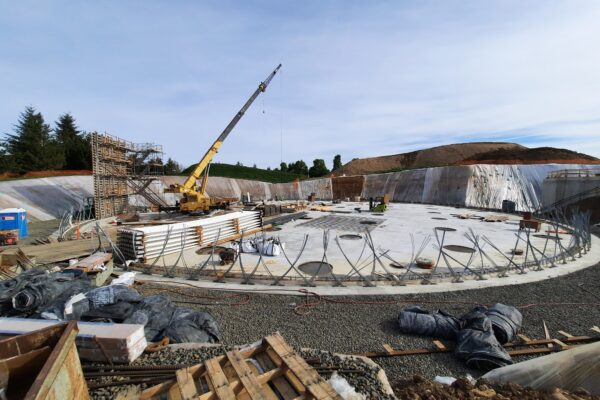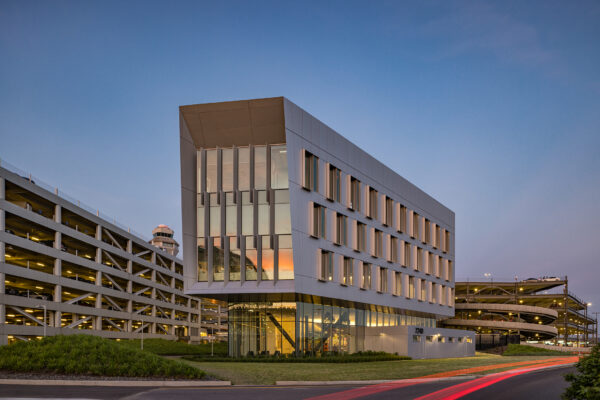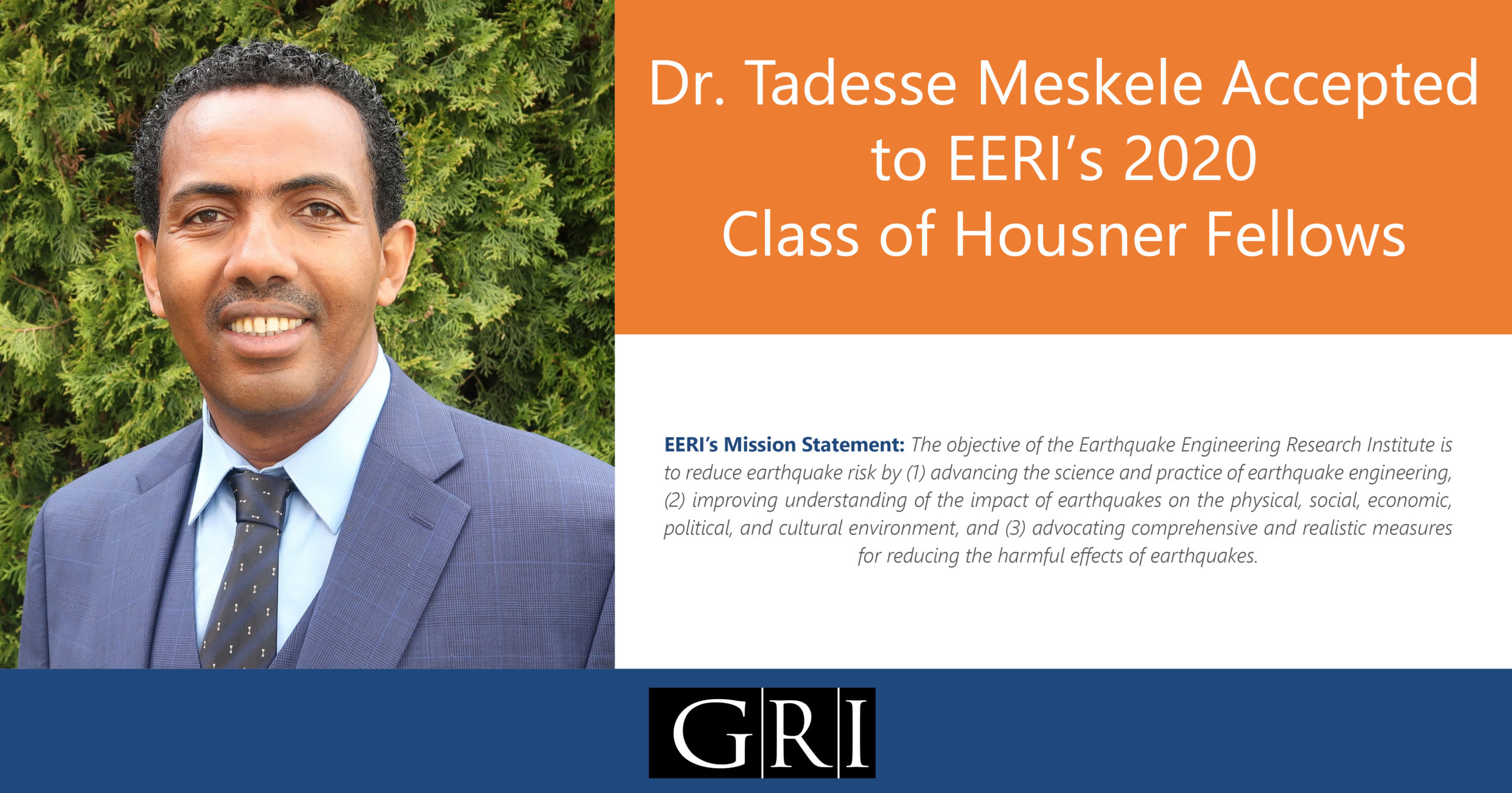
Dr. Tadesse Meskele Accepted to the EERI’s 2020 Class of Housner Fellows!
Tadesse Meskele, PhD, PE, has been selected by the Earthquake Engineering Research Institute (EERI) as a member of the 2020 Class of Housner Fellows. After a rigorous and competitive application process, Dr. Meskele is one of six Fellows selected by the EERI Housner Fellows Management Committee for the 2020 Class. During his two-year commitment to the program, Dr. Meskele will participate in a wide variety of dynamic educational events, conferences, supporting policies for seismic resiliency. We are excited that Dr. Meskele has this amazing opportunity and that he will be an integral part of the EERI community over the next two years.
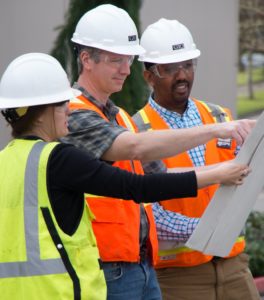 As a Housner Fellow, Dr. Meskele will participate in the Housner Institute, a week-long program of advanced classroom instruction under the direction of the Housner Fellows Management Committee. EERI Board Member, Dr. Lucy Arendt, has been selected to be the dedicated mentor and trainer for the six new Fellows. Currently, Housner Institute is planned for early August 2020. Part of the program includes a group project to support public policy and seismic risk reduction. Dr. Meskele will collaborate with the other highly talented Fellows to develop and implement the project before August 31, 2022, and their project will be presented during a webinar distributed to the EERI membership. In addition to the group project, other activities include policy development, attendance of regular meetings, and attendance at the 73rd EERI Annual Meeting in March of 2021 and/or the 12th National Conference on Earthquake Engineering (NCEE) in Summer 2022.
As a Housner Fellow, Dr. Meskele will participate in the Housner Institute, a week-long program of advanced classroom instruction under the direction of the Housner Fellows Management Committee. EERI Board Member, Dr. Lucy Arendt, has been selected to be the dedicated mentor and trainer for the six new Fellows. Currently, Housner Institute is planned for early August 2020. Part of the program includes a group project to support public policy and seismic risk reduction. Dr. Meskele will collaborate with the other highly talented Fellows to develop and implement the project before August 31, 2022, and their project will be presented during a webinar distributed to the EERI membership. In addition to the group project, other activities include policy development, attendance of regular meetings, and attendance at the 73rd EERI Annual Meeting in March of 2021 and/or the 12th National Conference on Earthquake Engineering (NCEE) in Summer 2022.
EERI is a leader of earthquake investigation, providing community awareness of minimizing seismic risk to infrastructure, and advancing the science and expertise for seismic studies. GRI is an active member of EERI and participates in providing innovative geotechnical and geological engineering for seismic resiliency studies. For more than 35 years, GRI has helped agencies across the Pacific Northwest in identifying ways to rehabilitate, retrofit, or replace infrastructure with seismic resilience in mind. Some of Dr. Meskele’s notable projects have included seismic upgrade and retrofit of the Oregon State Capitol complex in Salem, Oregon, and the Portland International Airport (PDX) north and south runways in Portland, Oregon; as well as seismic design for the Willamette Water Supply Program (WWSP) Raw Water Facilities and Reservoir No. 1 in Wilsonville, Oregon, and the Oregon State University (OSU) Marine Studies Initiative (MSI) building. The OSU MSI building will provide vertical evacuation site for a tsunami event, in the coastal town of Newport, Oregon. He also helped lead the geotechnical services for the research-based evaluation of seismic effects on transmission lines and major components for CEATI International, Inc.
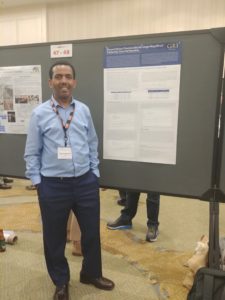 Dr. Meskele attended the 2020 National Earthquake Conference and 72nd EERI Annual Meeting this past March and with GRI Associate Jason Bock co-authored and presented a poster on Ground Motion Directionality for Large Megathrust Subduction Zone Earthquakes. This study examined the directionality of large megathrust subduction zone ground motions (Mw ≥8.0). The authors developed empirical models for various directionality ratios definitions and compared the results with existing models based on ground motion for shallow crustal earthquakes in active tectonic regions. In general, the empirical models in this study were found to be consistent with the existing models. An important observation from this study is that the current ASCE 7-16 scale factors are found to significantly underestimate the spectral ratio at short periods and overestimate at long periods. It is anticipated that the results from this study supplement the knowledge base for spectral ratios and provide updates to the regions where the seismic hazard is dominated by subduction zone events. The authors plan on analyzing additional large megathrust subduction zone ground motions to confirm or modify the proposed models. GRI financially aided the study and supports the authors in the next steps of their research.
Dr. Meskele attended the 2020 National Earthquake Conference and 72nd EERI Annual Meeting this past March and with GRI Associate Jason Bock co-authored and presented a poster on Ground Motion Directionality for Large Megathrust Subduction Zone Earthquakes. This study examined the directionality of large megathrust subduction zone ground motions (Mw ≥8.0). The authors developed empirical models for various directionality ratios definitions and compared the results with existing models based on ground motion for shallow crustal earthquakes in active tectonic regions. In general, the empirical models in this study were found to be consistent with the existing models. An important observation from this study is that the current ASCE 7-16 scale factors are found to significantly underestimate the spectral ratio at short periods and overestimate at long periods. It is anticipated that the results from this study supplement the knowledge base for spectral ratios and provide updates to the regions where the seismic hazard is dominated by subduction zone events. The authors plan on analyzing additional large megathrust subduction zone ground motions to confirm or modify the proposed models. GRI financially aided the study and supports the authors in the next steps of their research.
History of the Housner Fellows Program:
(Full history can be found on the EERI Housner Fellows Program Page: https://www.eeri.org/projects/housner-fellows-program/)
EERI implemented the Housner Fellows Program in 2011 to identify talented individuals in the industry to exercise leadership and technical expertise to reduce earthquake risk. Earthquake engineering and seismic mitigation have advanced dramatically over the past 70 years, in part due to the advocacy and persistence of industry leaders. The Housner Program was named after Professor Dr. George Housner, PhD, who made a significant impact to the industry in his advancement of earthquake safety.
Visit the EERI website for more information: https://www.eeri.org/about-eeri/our-mission/



